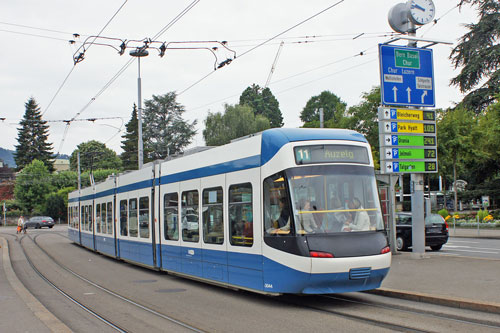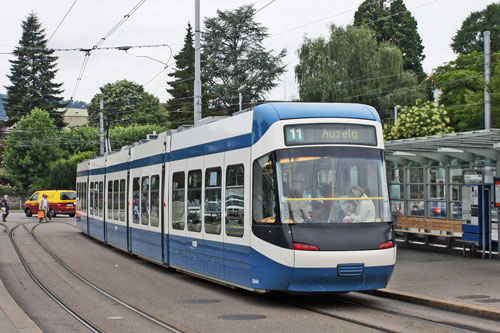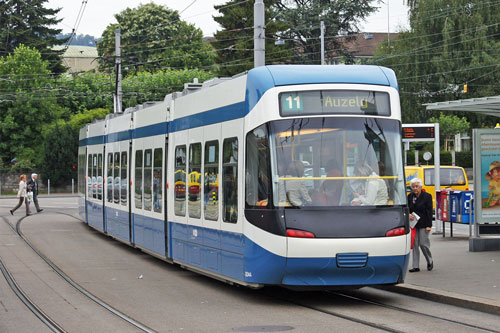|
|
|
| |
VBZ - Verkehrsbetriebe Zürich
All images link to larger
copies which will open in a new window/tab
|
|
|
Verkehrsbetriebe Zürich (ZVB) run the trams , trolleybuses,
buses and a funicular in the Swiss city of Zürich and is wholly
owned by the city. Formed as the Städtische Strassenbahn Zürich
(SSZ), it received its current name in 1950.
Various projects to introduce trams to Zurich were proposed from
the 1860s onwards. It was not until 1882, however, that the
first tram operated in the city. In the early years, trams were
operated by private companies. These were acquired by the
municipal tramway operator, SSZ, between 1896 and 1931 and
integrated into a single network.
Zürcher Verkehrsverbund (ZVV) coordinates the ticketing and
services on trams, buses, local railways, lake ferries,
funiculars in the greater Zürich area in Switzerland.
|
|
|
|
|
|
| |
|
|
Swiss Railways
Platform 5
European Handbook No.5 by Haydock, Fox, Garvin
Lokomotiven & Triebwagen der Schweizer Bahnen
Band 2: Privatbahnen Westschweiz & Wallis by Peter
Willen
Orell Fuessli Verlag
http://www..com
|
|
|
|
|
VBZ - Verkehrsbetriebe Zürich
All images link to larger
copies which will open in a new window/tab
The Swiss 'Standard' tram was designed in Zürich to
replace their large fleet of two-axle cars. It was influenced by best
practice in PCC, Milano 'Peter Witt' cars and the latest Oslo cars. Brown
Boveri et Cie (BBC) built the first prototype as Zürich 351 in 1939. The
second prototype 401 from Schweizerische Waggon- und Aufzügfabrik, Schlieren
(SWS) followed in 1940 - this was a lighter tram than 351. They set the
pattern for almost all modern bogie trams built for service in western
Europe. Orders were placed for both designs of tram, becoming 1351-1415 and
1501-1552 after the 1945 Zürich renumbering. The last lightweight car 1549
lasted until 1987 and the last heavy cars remained until 1998. Lightweight
and heavyweight single-ended cars were offered to other operators plus an
intermediate double-ended car.
Heavyweight Trams - VST Typ
1b - B4/4 1351-1415
Two three axle trams 31-32 (later 1031-1032) were
built in 1939 by SWS/SLM. the bodies on these trams formed the basis of the
Swiss standards. Series production of the heavier standards started with
351-370 (later 1351-1370) between 1940-45. These were designated VST Typ 1b.
These trams weighed 18t and were 288hp. The next batch were 1371-1375 built
in 1947 with 360hp, weighing 20.5t. The final batch was 1376-1415 with
340hp, delivered 1947-54. The last cars in normal service were withdrawn in
1998.
Heavyweight Swiss Standard 1366 on route 4
Photo: © Ian Boyle August 1988
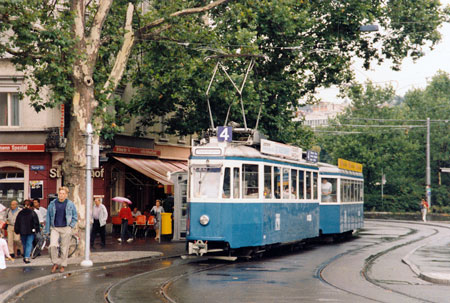
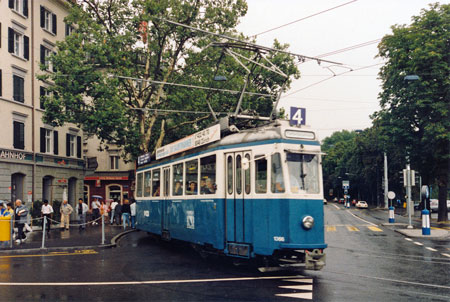
Heavyweight Swiss Standard 1379 on route 6
Photo: © Ian Boyle August 1988
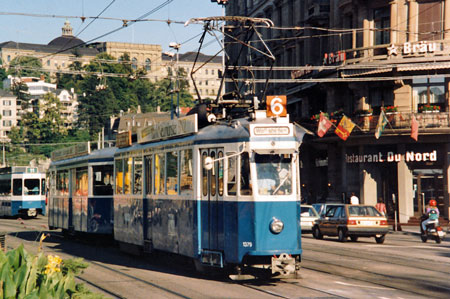
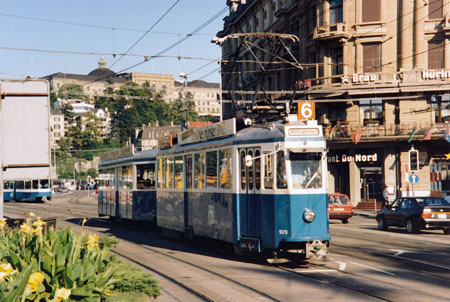
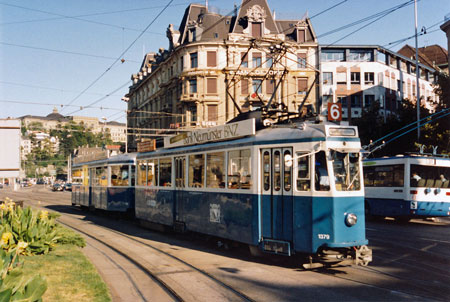
Heavyweight Swiss Standard 1389 on route 6
Photo: © Ian Boyle August 1988
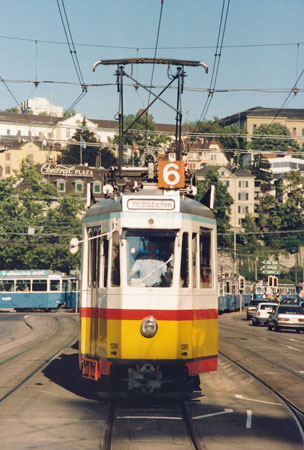
Heavyweight Swiss Standard 1393 on route 5
Photo: © Ian Boyle August 1988
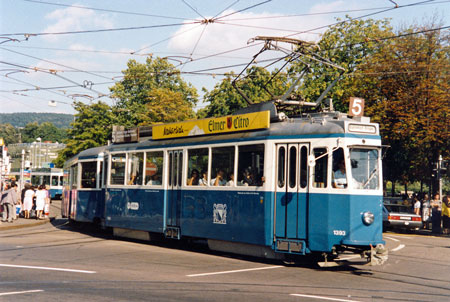
Heavyweight Swiss Standard 1405 on route 6
Photo: © Ian Boyle August 1988
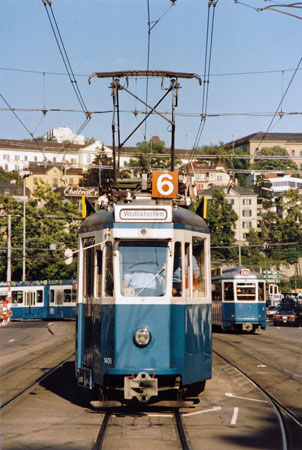
Unidentified heavyweight Swiss Standard 13xx on route 4
Photo: © Ian Boyle August 1984
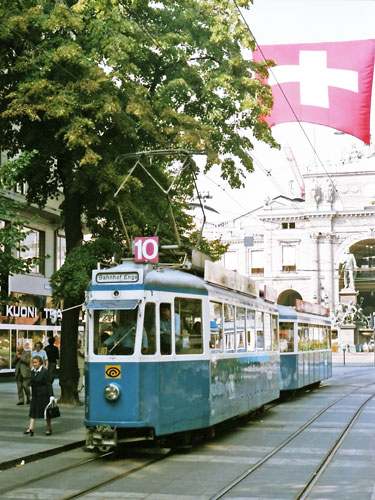
Lightweight Trams - VST Typ
1a - B4/4 1501-1552
Series production of the lighter standards started
with 401-418 (later 1501-1518) between 1941-46. These were designated VST
Typ 1a. These trams weighed 14.6t and were 200hp. Two trams 1551-1552 with
260hp were built in 1949. The final batch was 1519-1550 with 254hp built
between 1949-1952. The last one was withdrawn in 1987.
Lightweight Swiss Standard 1534 on route 6 towards the
end of its life
Photo: © Ian Boyle August 1985
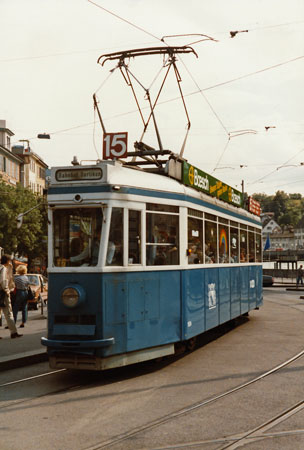
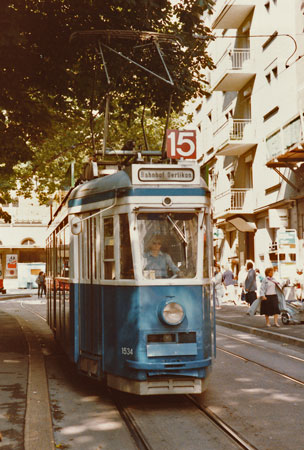
Unidentified lightweight Swiss Standard from batch
1501-1552 on route 4 towards the end of its life
Photo: © Ian Boyle August 1985
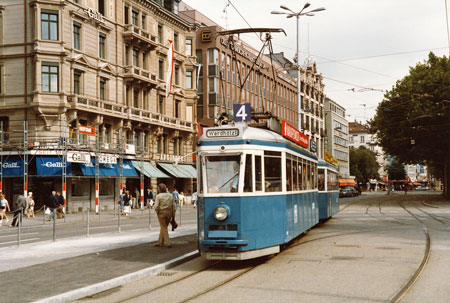
Lightweight Trailers - VST
Typ A - B4 711-798
Series production of the light standard trailers
started with 711-765 (excluding 750) from 1945-52. They had two doors, one
at the rear and one behind the leading bogie. They weighed 9.4t. 750 had the
second door nearer the front. 766-770 were similar to the first batch and
were built in 1953. These earlier trailers had 22 seats and 91 standing
places. Later batches were 771-786 (with 34 seats, built 1959-60) and
787-798 (with 26 seats, built 1962-63). These later trailers had three
doors.
Lightweight Swiss Standard trailer 789, towed by an
articulated car
Photo: © Ian Boyle August 1985
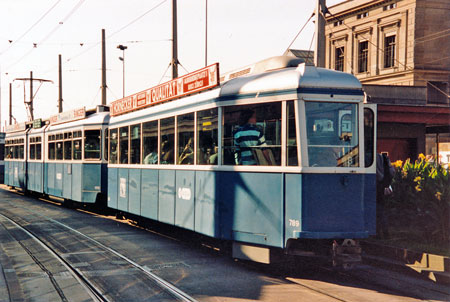
Karpfenzug Trams - Be4/4 1416-1430
Tram 1419
Karpfenzug 1419 on route 9 at Bürkliplatz
Photo: © Ian Boyle 1984
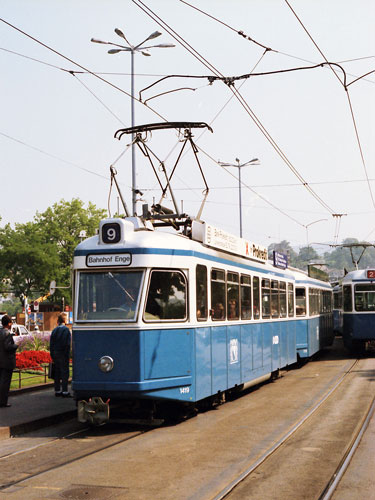

Tram 1420
Karpfenzug 1420 on route 9 at Bürkliplatz
Photo: © Ian Boyle 1984
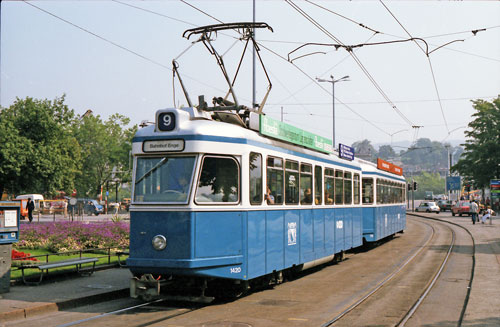
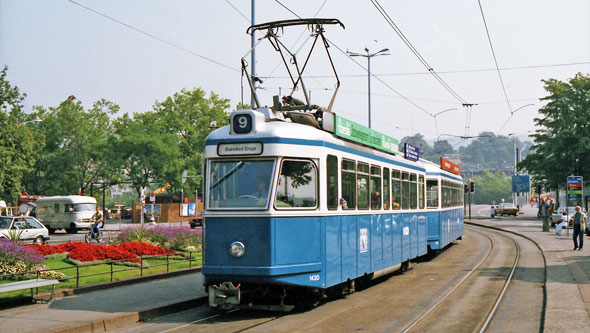
Tram 1424
Karpfenzug 1424 on route 9
Photo: © Ian Boyle 1984
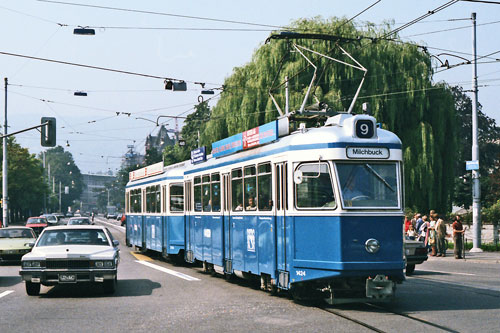
Tram 1429
Karpfenzug 1429 on route 11
Photo: © Ian Boyle 1984
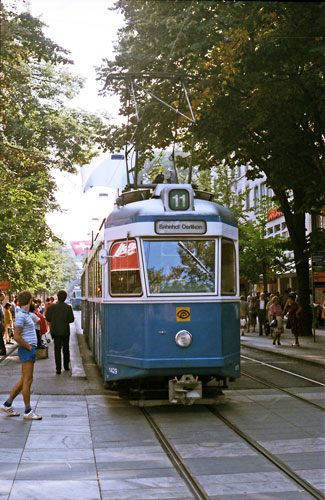
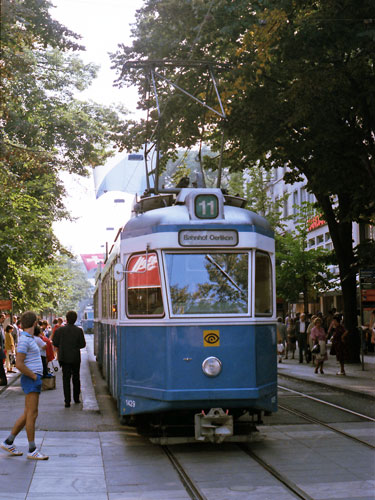
Tram 1430
Karpfenzug 1430 - museum tram in the VBZ Zurich
Tram Museum
Photo: © Ian Boyle 12th July 2012
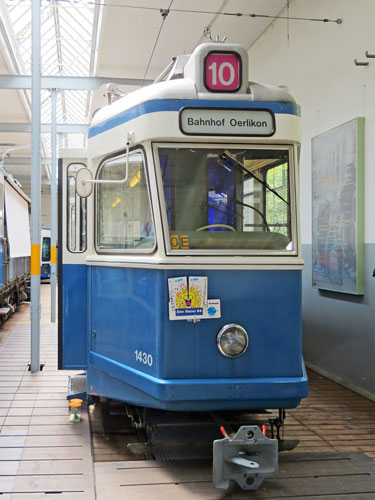
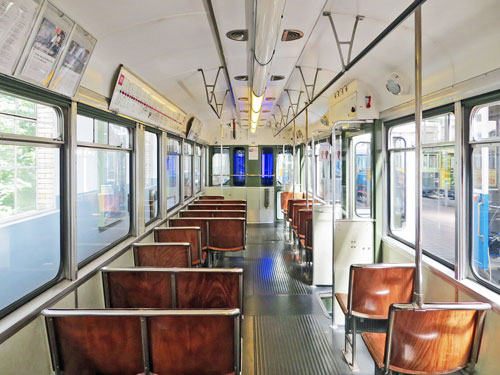
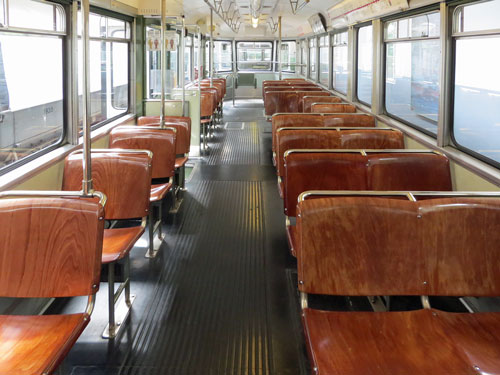
Mirage Trams - 1601-1690 -
1691-1726
Tram 1602
Mirage 1602 on route 2 at Bürkliplatz
Photo: © Ian Boyle 1984
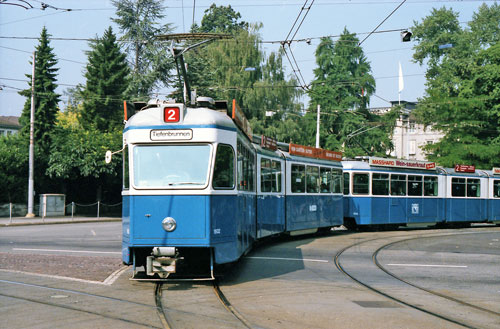
Tram 1609
Mirage 1609 on route 2 at Bürkliplatz
Photo: © Ian Boyle 1984
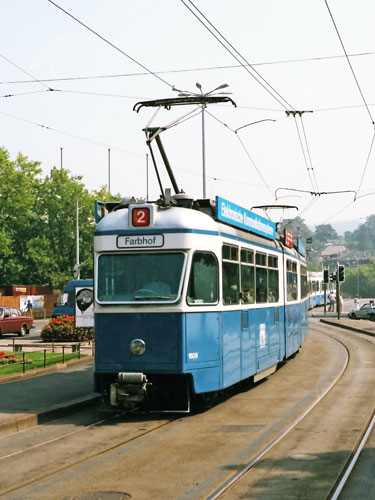
Tram 1617
Mirage 1617 on route 6 at Bürkliplatz
Photo: © Ian Boyle 1984
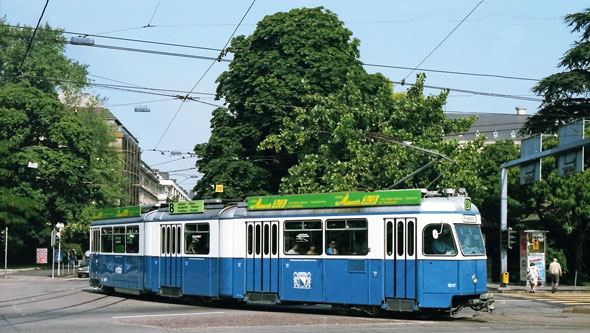
Tram 1618
Mirage 1618 on route 8 at Bürkliplatz
Photo: © Ian Boyle 1984
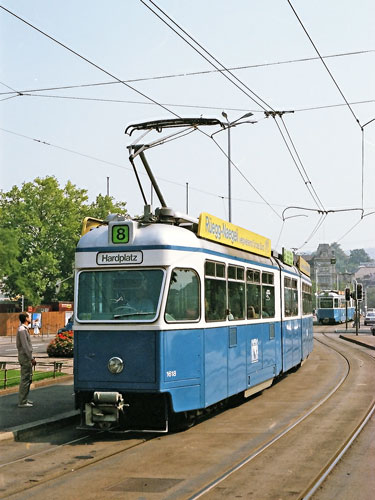
Tram 1675
Mirage 1675 in the Zurich Tram Museum
Photo: © Ian Boyle 2014
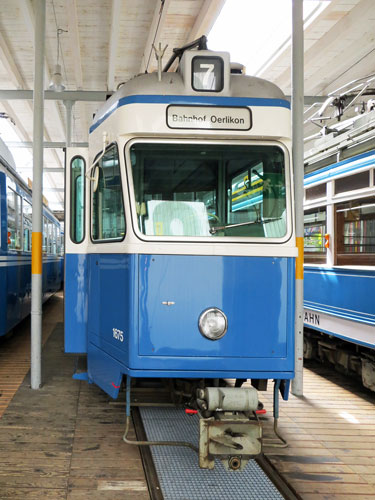
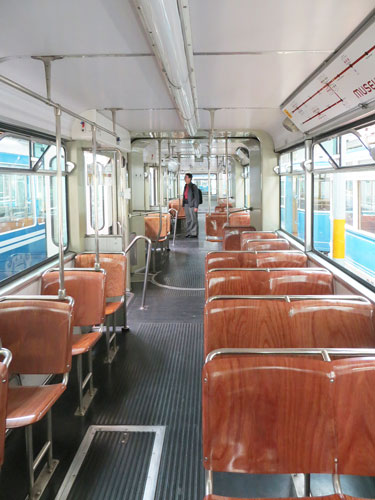
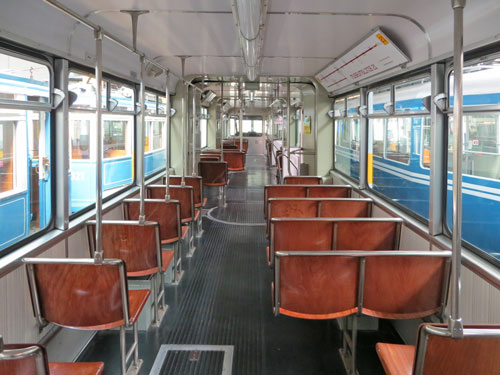
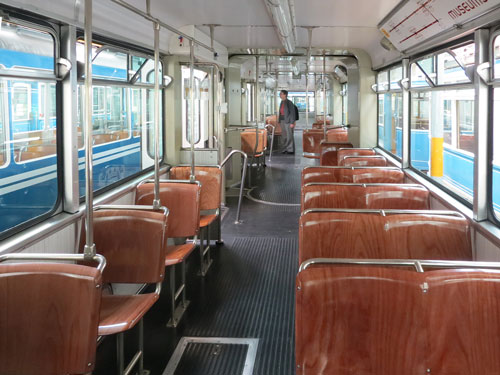
Tram 1682
Mirage 1682 on route 8 at Bürkliplatz
Photo: © Ian Boyle 1984
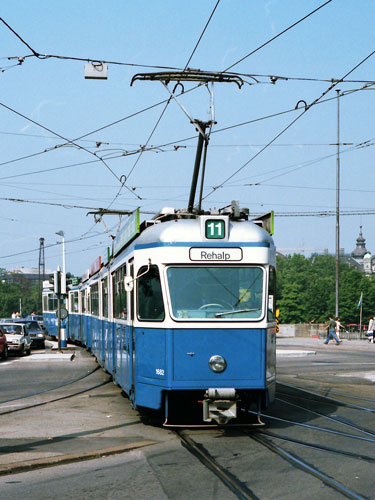
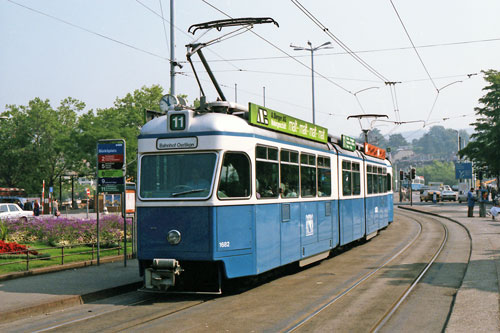
Tram 2000 - Be4/6 2001-2098
The. first Tram2000 vehicles were delivered to VBZ in
1976. These were six-axle single-ended articulated vehicles (Be4/6) with two
powered axles at each end. They have an emergency controller at the rear
end. They can be operated in coupled pairs, but matching non-driving Be4/6
and Be2/4 powered units were also produced.
The first batch 2001-2045 was delivered between 1976-78.The bodies were
built by SWS, the bogies by SIG and the electrical equipment by BBC. In the
same period, non-driving Be4/6 units 2301-15 were also delivered.
In 1985, delivery of a second batch commenced. As SWS was no longer trading,
Bodies were supplied by Schindler as SWS was no longer trading. Numbers
2046-2098 are largely similar to 2001-45. Also delivered were non-driving
bogie Be2/4 units numbered 2401-20. This type was designed for use on routes
where platform extensions at some stops were not possible. Delivery of the
second batch lasted until 1987.
The third and final batch was delivered in 1991-1992. This comprised units
2099-2121 and 2421-35. In contrast to the earlier batches, these trams have
three-phase AC motors. Despite electrical differences between the batches,
all Tram 2000 units in Zurich can be combined for multiple unit operation.
Units 2099-2121 were later extended to
Be4/8 by inserting a low-floor
centre section.
Tram 2001
Tram2000 - 2051 on route 15
Photo: © Ian Boyle 2014
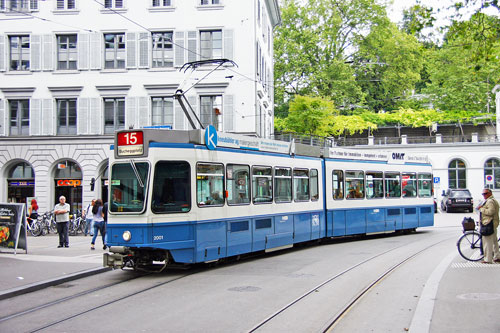
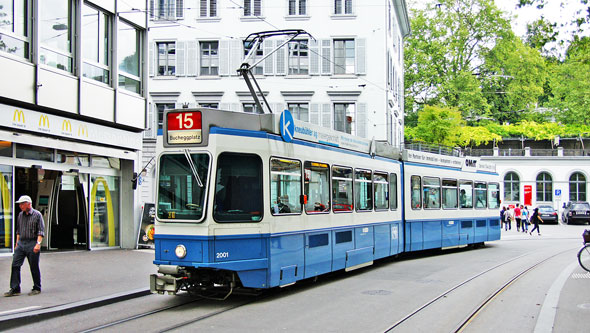
Tram 2004
Tram2000 - number 2004
Photo: © Ian Boyle 2017
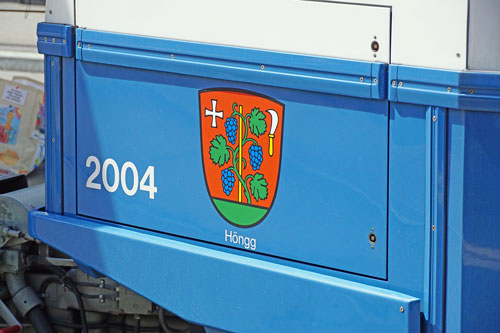
Tram 2014
Tram2000 - 2014 on route 11
Photo: © Ian Boyle 1984
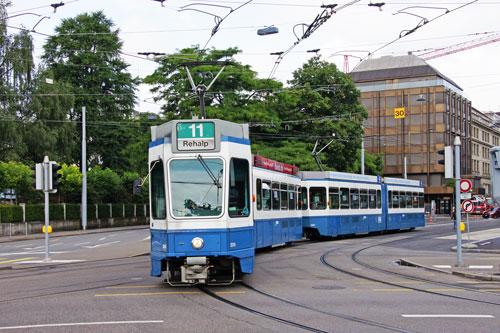
Tram 2019
Tram2000 - 2019 on route 11
Photo: © Ian Boyle 1984
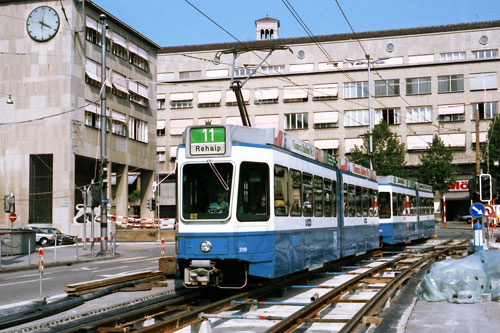
Tram 2022
Tram2000 - 2022 on route 11
Photo: © Ian Boyle 1984
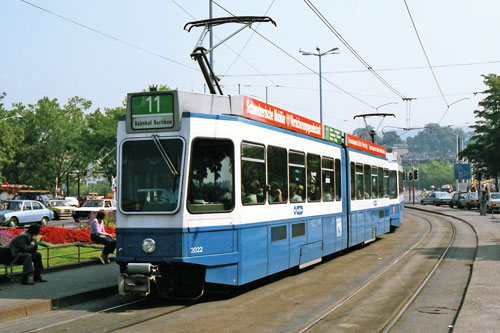
Tram 2024
Tram2000 - 2022 on from the rear on route 11
Photo: © Ian Boyle 1984
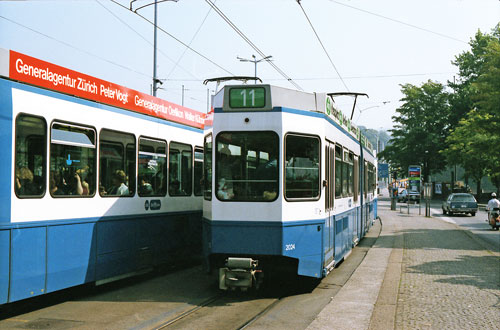
Tram 2026
Tram2000 - 2022 on route 11
Photo: © Ian Boyle 1984

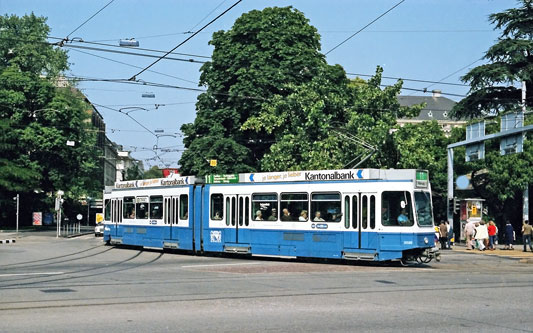
Tram 2028
Tram2000 - 2028 on route 11
Photo: © Ian Boyle 1984
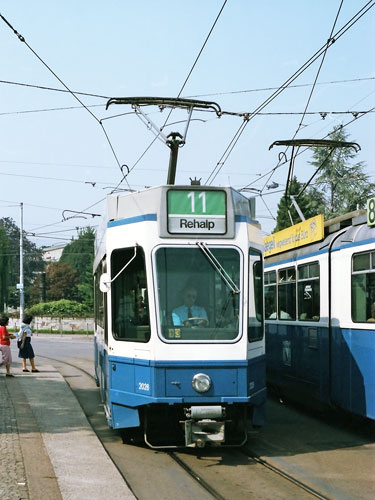
Tram 2032
Tram2000 - 2028 on route 8
Photo: © Ian Boyle 12th July 2014
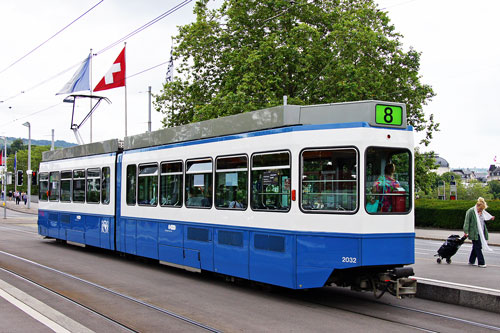
Tram 2042
Tram2000 - 2042 on route 8
Photo: © Ian Boyle 12th July 2014
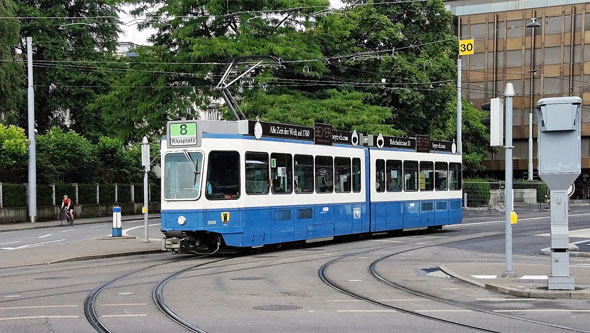
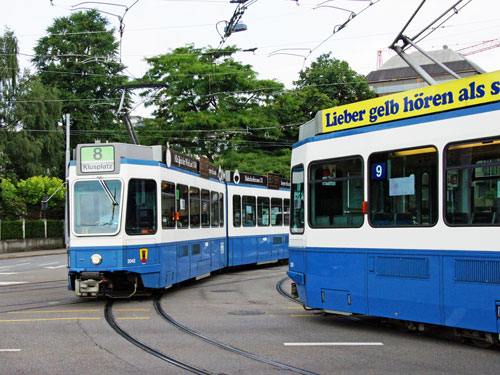
Tram 2047
Tram2000 - 2047 on route 2
Photo: © Ian Boyle 12th July 2014
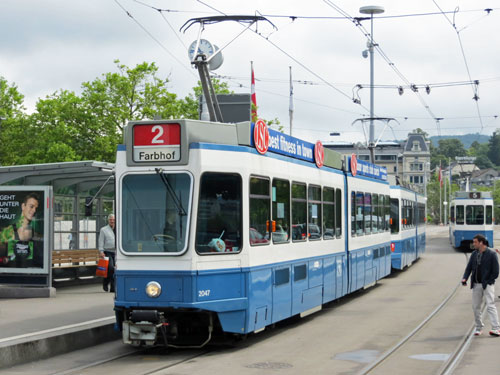
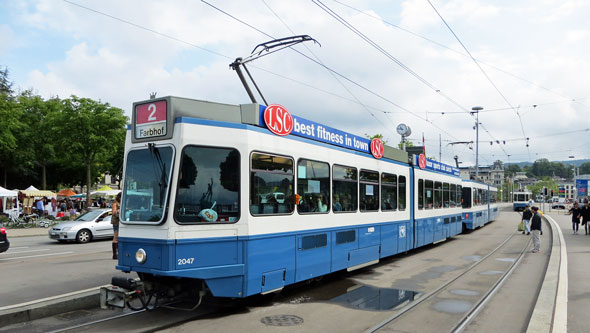
Tram 2049
Tram2000 - 2047 on route 11
Photo: © Ian Boyle 12th July 2014
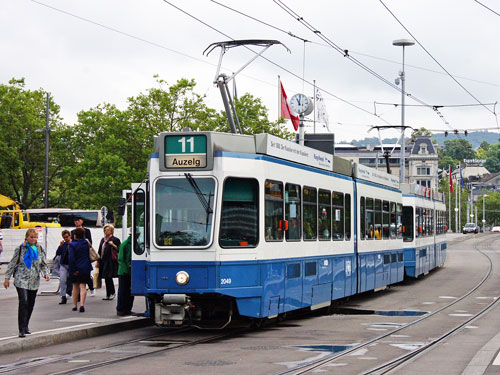

Tram 2051
Tram2000 - 2051 on route 2 at Bürkliplatz
Photo: © Ian Boyle 19th July 2011
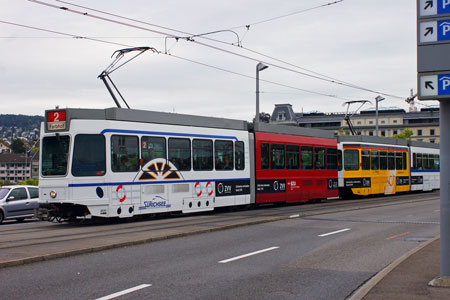
Tram 2052
Tram2000 - 2052 on route11
Photo: © Ian Boyle 2017
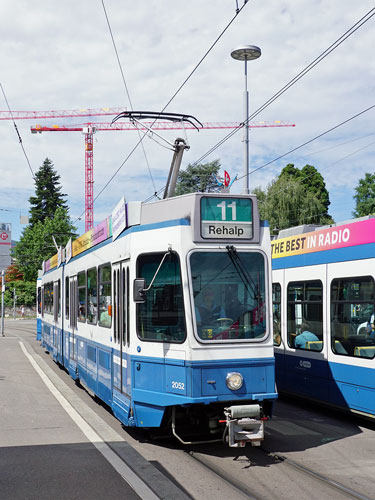
Tram 2054
Tram2000 - 2054 on route11
Photo: © Ian Boyle 2017
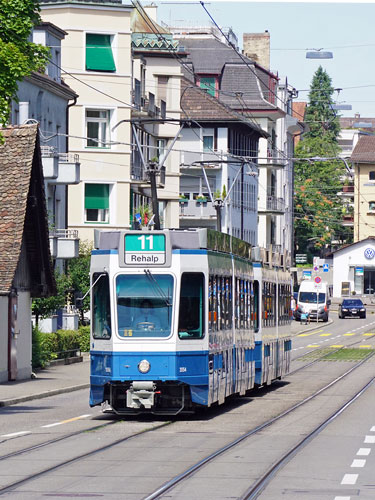
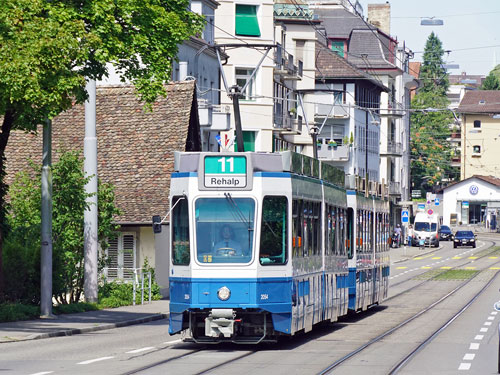
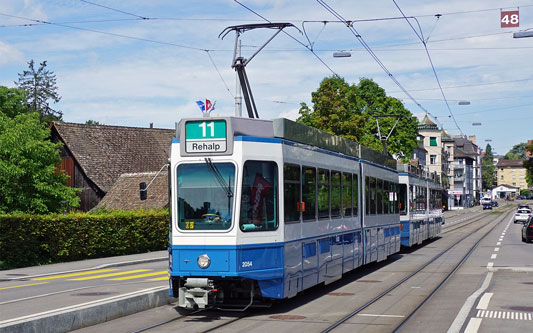
Tram 2059
Tram2000 - 2059 on route 2 at Bürkliplatz
Photo: © Ian Boyle 19th July 2011
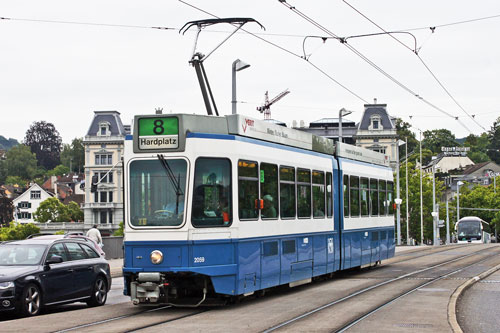
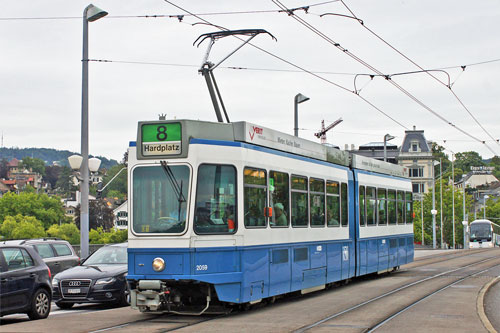
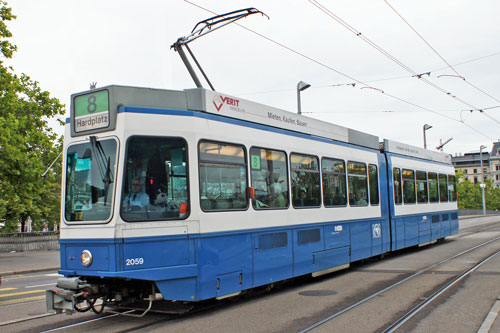
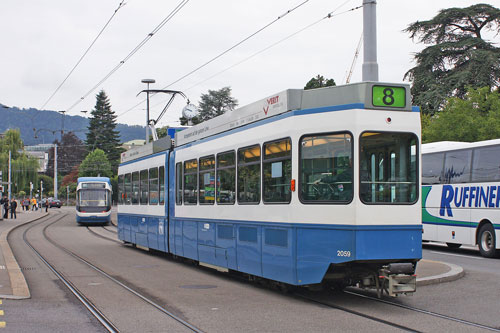
Tram 2063
Tram2000 - 2063 on route 3
Photo: © Ian Boyle 12th July 2014
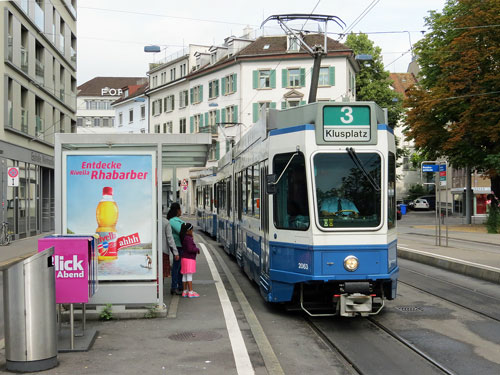 Tram2000 - 2063 on route 3 at Bürkliplatz
Tram2000 - 2063 on route 3 at Bürkliplatz
Photo: © Ian Boyle 25th July 2017

Tram 2068
Tram2000 - 2068 on route 8 at Bürkliplatz
Photo: © Ian Boyle 19th July 2011
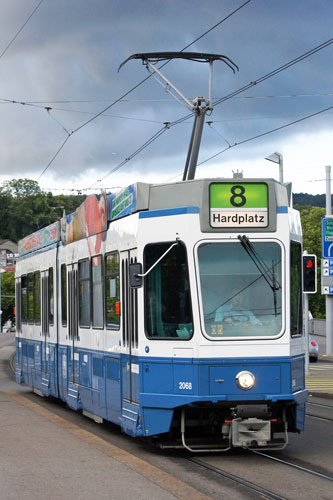
Tram 2075
Tram2000 - 2068 on route 11 at Rehalp
Photo: © Ian Boyle 25th July 2017
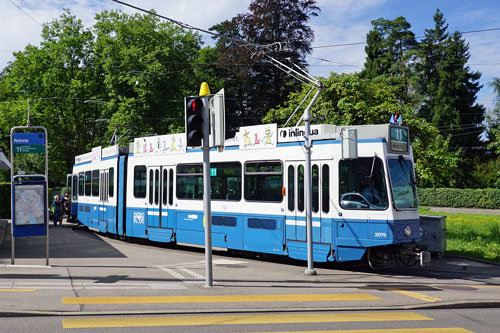
Tram 2087
Tram2000 - 2087 on route 5
Photo: © Ian Boyle 12th July 2017
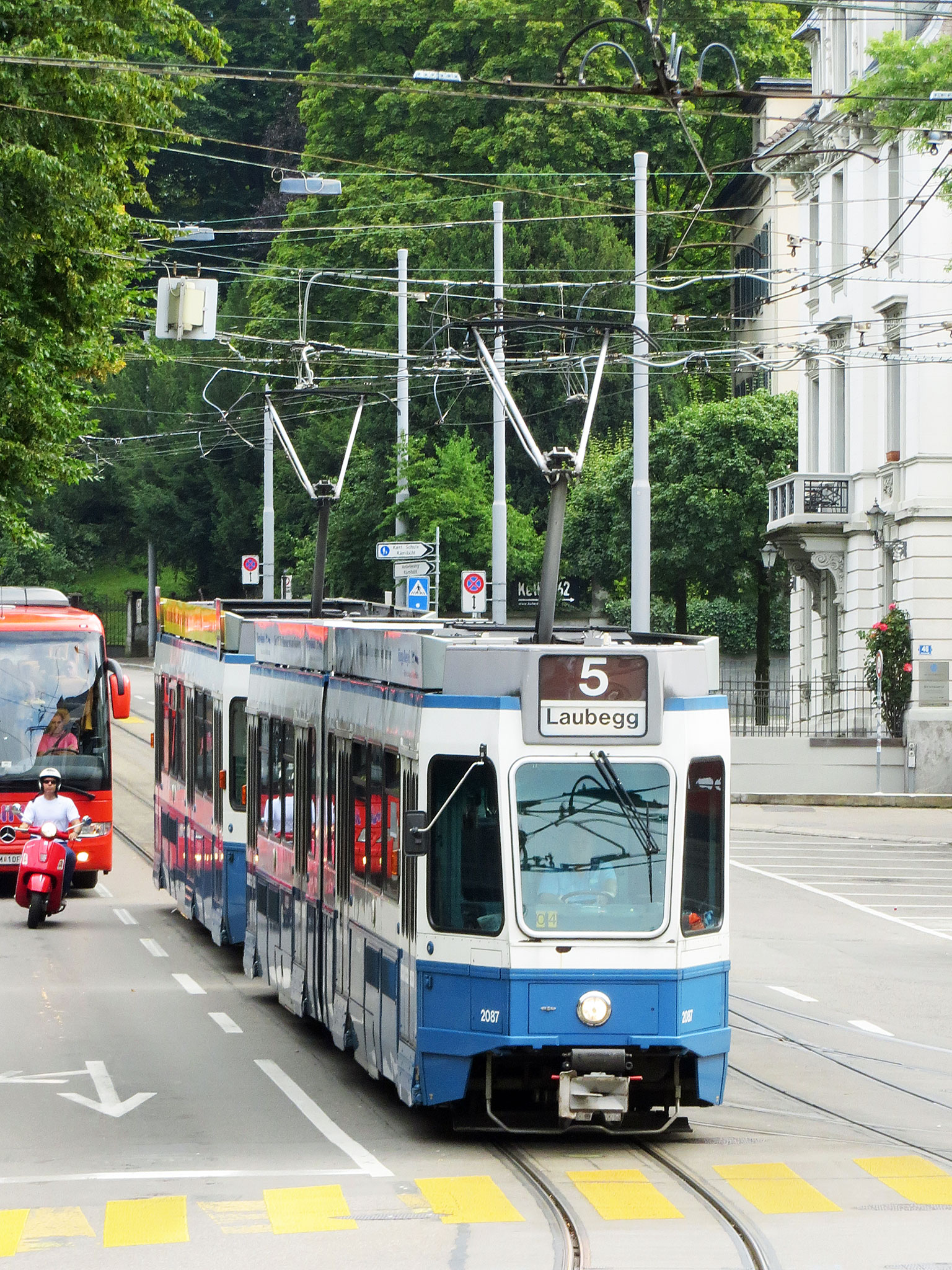
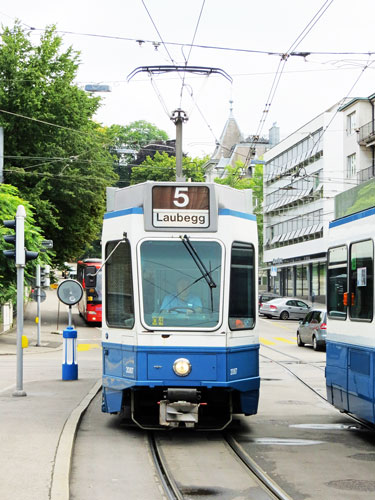
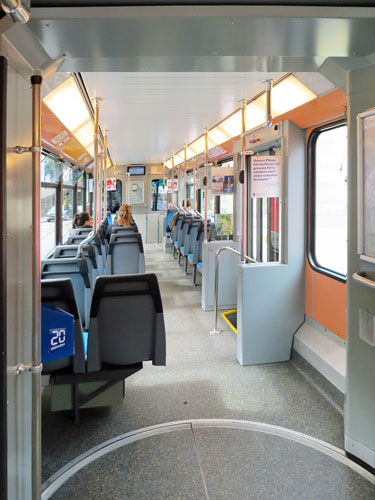
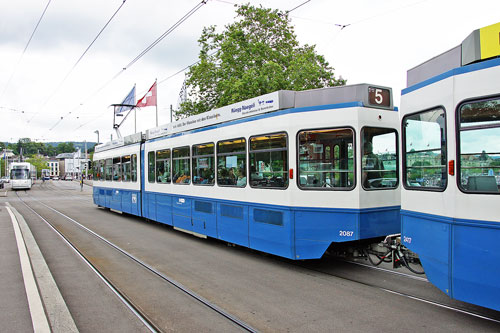
Tram 2091
Tram2000 - 2091 on route 9 at Bürkliplatz
Photo: © Ian Boyle 25th July 2017
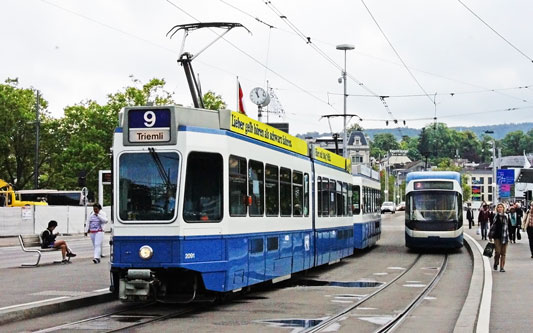
Tram 2096
Tram2000 - 2096 on route 9 at Hirzenbach
Photo: © Ian Boyle 19th July 2011
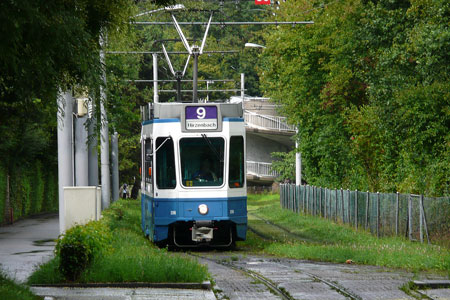
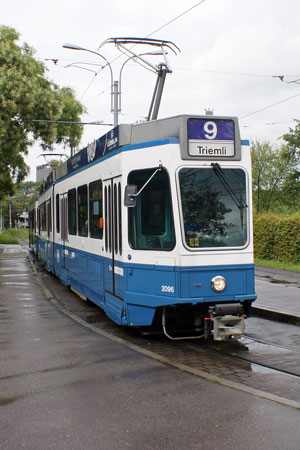
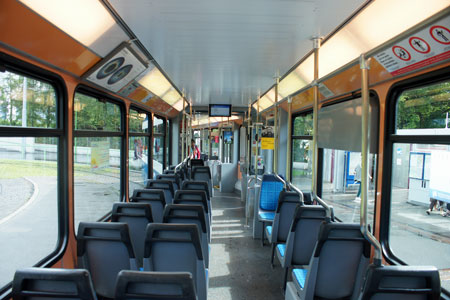
Tram 2000 - Be4/8
2099-2121
The third and final batch of Tram2000 vehicles was delivered in 1991-1992.
This comprised units 2099-2121 and 2421-35. In contrast to the earlier
batches, these trams have three-phase AC motors. Despite electrical
differences between the batches, all Tram 2000 units in Zurich can be
combined for multiple unit operation.
In 2001, unit 2113 was extended to
Be4/8 by inserting a low-floor centre section. Remaining units of the
2099-2121 batch were similarly extended between 2004-2005.
Tram 2114
Tram2000 - 2114 with low floor centre section on
route 9 at Bürkliplatz
Photo: © Ian Boyle 25th July 2014
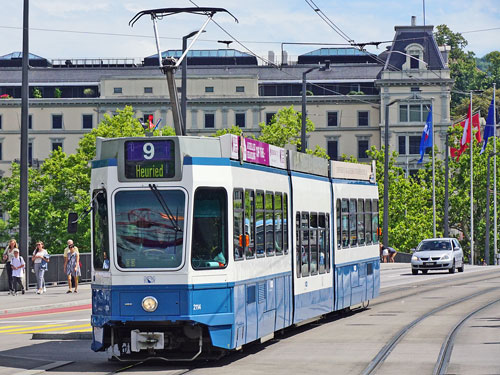

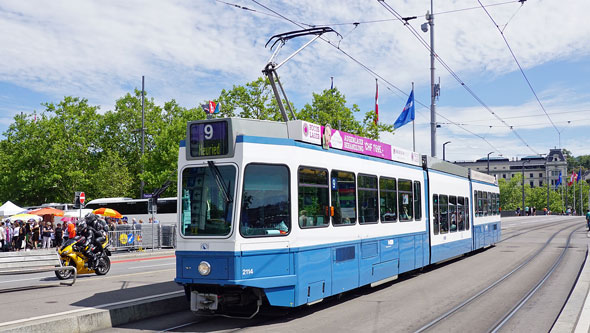
Tram 2119
Tram2000 - 2119 with low floor centre section on
route 7 at Hauptbahnhof
Photo: © Ian Boyle 19th July 2011
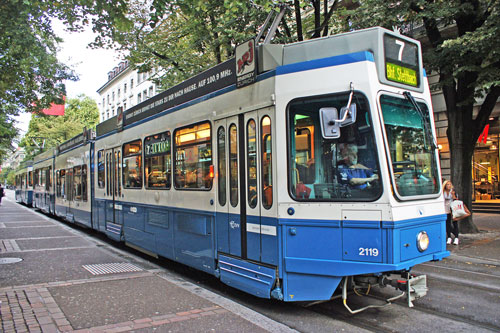
Tram trailer 2305
Tram2000 - 2305 non-driving articulated trailer with low floor centre section on
route11 at Rehalp
Photo: © Ian Boyle 25th July 2017
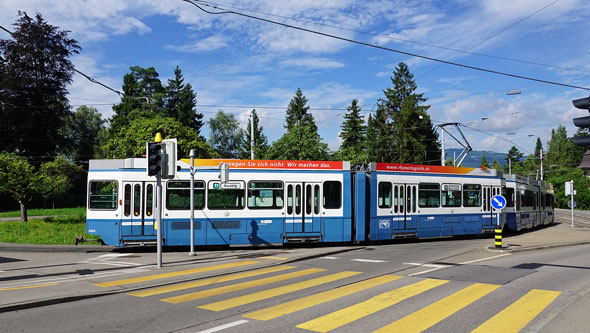
Tram trailer 2413
Tram2000 - 2412 non-driving bogie trailer on
route3
Photo: © Ian Boyle 12th July 2014
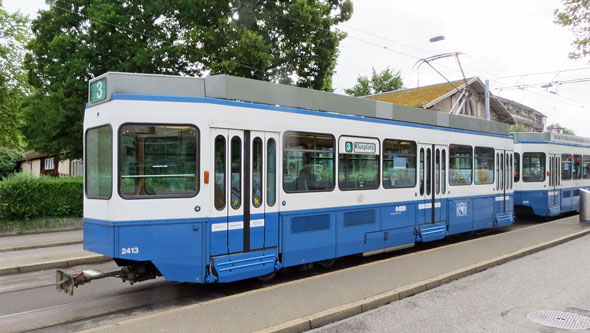
Tram trailer 2418
Tram2000 - 2418 non-driving bogie trailer on
route 3
Photo: © Ian Boyle 12th July 2014
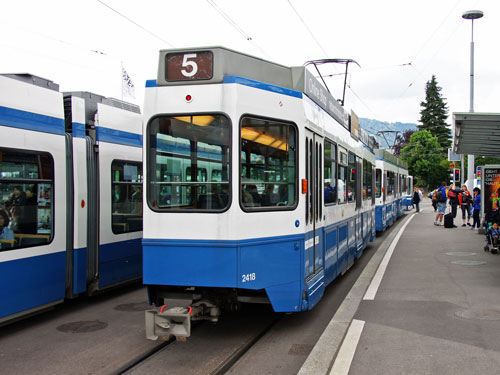
The Cobra Tram is Zürich 's newest tram type and first fully low floor tram.
In 1992, a consortium of Swiss rolling stock manufacturers proposed a new
design of low-floor articulated tram, targeted for Zürich and Basel. The
design is based on short body segments, with four-wheel trucks under every
second segment. The wheel pairs of these trucks are not connected by axles
but pivot individually and are steered into curves, intended to reduce wear
and noise and increase passenger comfort. The lack of axles permits a low
floor throughout the vehicle. The wheel boxes themselves are fit under
seats, as are the motors. This running gear would have been designed and
manufactured by Schweizerische Industrie Gesellschaft (SIG). The electrical
equipment would have been supplied by ABB and the tram body by Schindler.
ABB and Schindler later became parts of Bombardier. Zürich ordered six
prototypes 3001-3006 delivered in 2001. Basel decided to order Siemens
Combino trams, vehicles subject to a number of problems. The prototype
Cobras also had their problems - cracks in drive mechanisms and high noise
levels. Following correction of these faults, VBZ ordered 68 production set
(3007-3074) for delivery from 2005-2009. This allowed most pre-Tram 2000
vehicles to be withdrawn. Another 14 sets were ordered later (3075-3088) and
the six prototypes were rebuilt to conform with the production units.
Tram 3004
Cobra Tram 3004 on route 12 at Bellevue
Photo: © Ian Boyle 25th July 2017
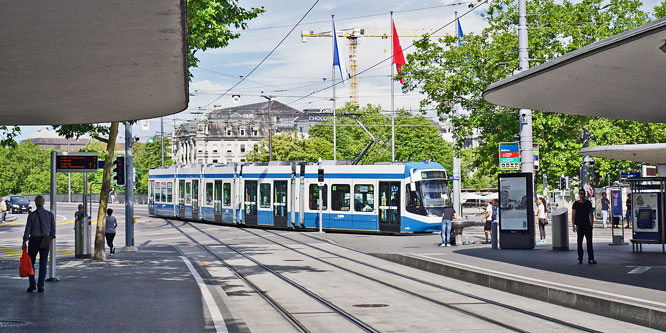
Tram 3008
Cobra Tram 3008 on route 12 at Bürkliplatz
Photo: © Ian Boyle 25th July 2017

Tram 3016
Cobra Tram 3016 on route 2 at Bürkliplatz
Photo: © Ian Boyle 19th July 2011
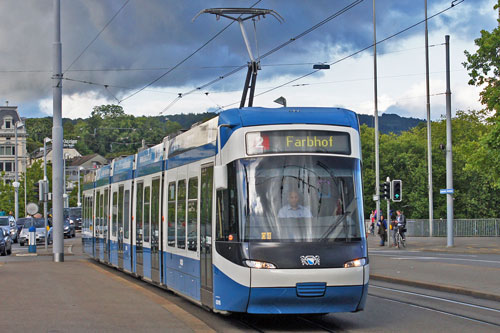
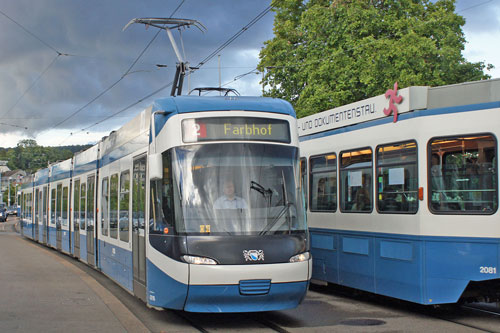
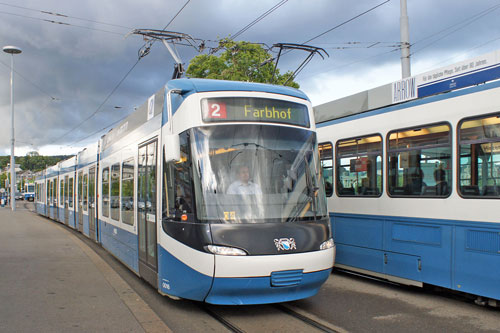
Tram 3022
Cobra Tram 3022 on route 9 at Bürkliplatz
Photo: © Ian Boyle 19th July 2011
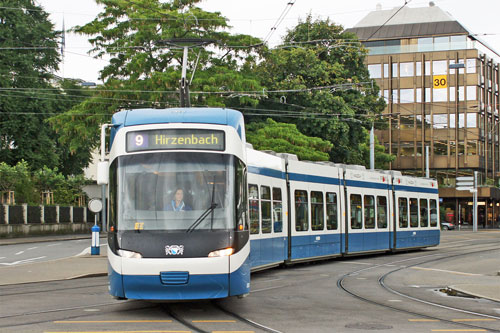
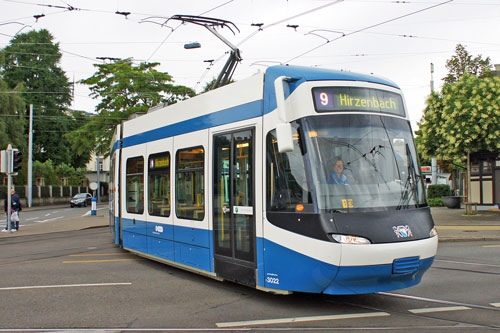
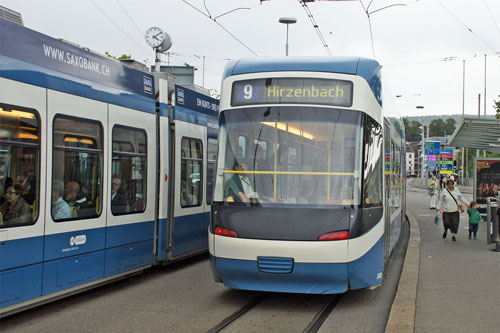
Cobra Tram 3022 at the terminus of route 9 at
Hirzenbach
Photo: © Ian Boyle 19th July 2011
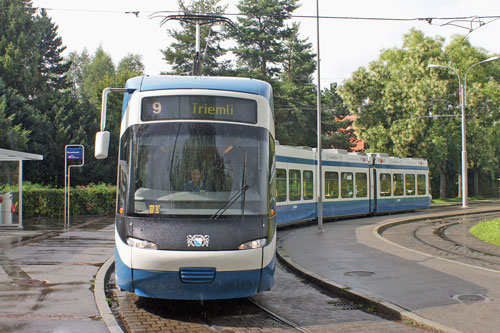
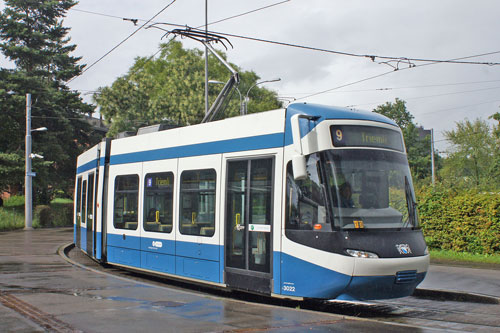
Tram 3044
Cobra Tram 3044 on route 11 at Bürkliplatz
Photo: © Ian Boyle 19th July 2011
